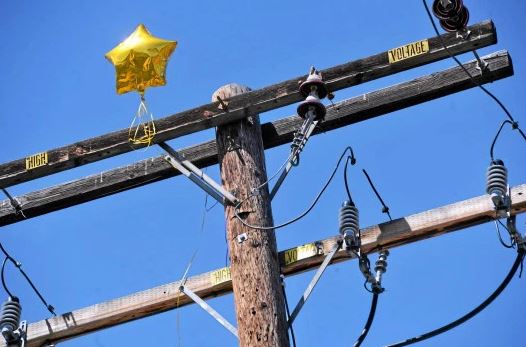Although the current global helium shortage hasn’t stopped many celebrants from carrying Mylar balloons to graduations and other parties, keeping balloons away from power lines is essential to public safety. Metroforensics wants to remind you that proper handling and disposal of Mylar balloons prevents them from drifting into power lines and causing power outages.
Last summer, Mylar balloons caused many noteworthy outages – one that lasted six hours and affected more than 31,500 customers and another that lasted 7 hours and affected nearly 45,000 customers.
The metallic coating on Mylar balloons conducts electricity. Because of this, when a Mylar balloon touches a power line or floats into substation equipment, it can cause a short circuit. This contact can lead to downed wires, power outages, fires and injuries.
The safety of our customers is always a utility company's top priority. To reduce the risk of outages and injuries, please keep the following safety tips in mind:
- NEVER touch a power line. Do not attempt to retrieve a balloon, kite, or other types of toys or debris entangled in an overhead power line or substation. Call PSE&G to report the problem at 1-800-436-7734 so our crews can remove the item safely.
- Keep Mylar balloons and other decorations away from overhead power lines and all utility equipment.
- Do not fly kites or hold Mylar balloons in the rain, during electrical storms nor while crossing streets.
- Keep balloons tethered at all times. Make sure balloons are secured to a weight that is heavy enough to prevent them from floating away.
- Always dispose of Mylar balloons properly by safely puncturing the balloon in several places to release the helium that otherwise could cause the balloon to float away.


